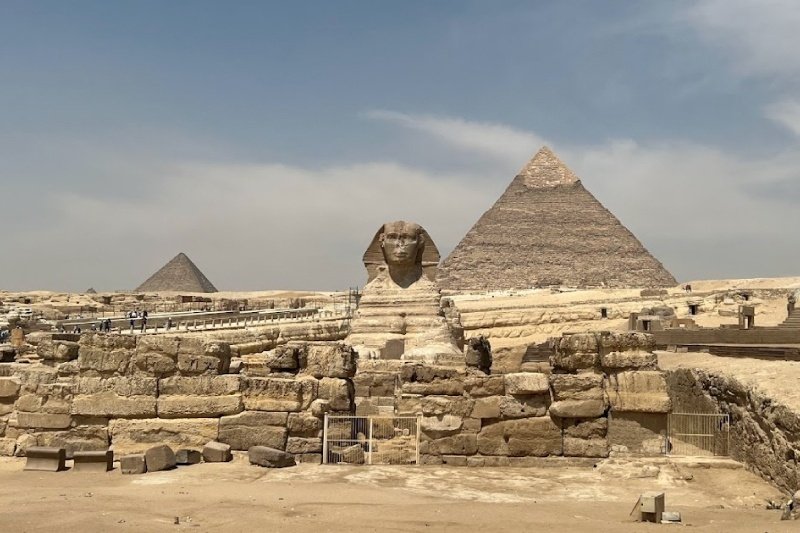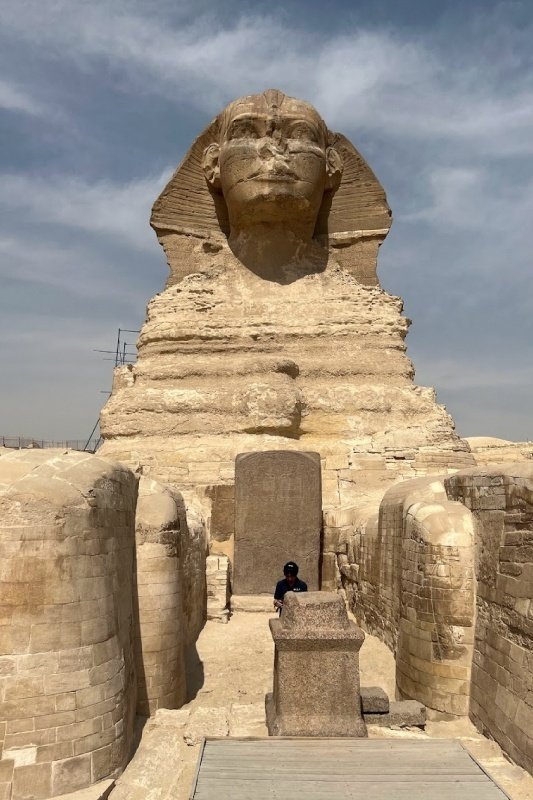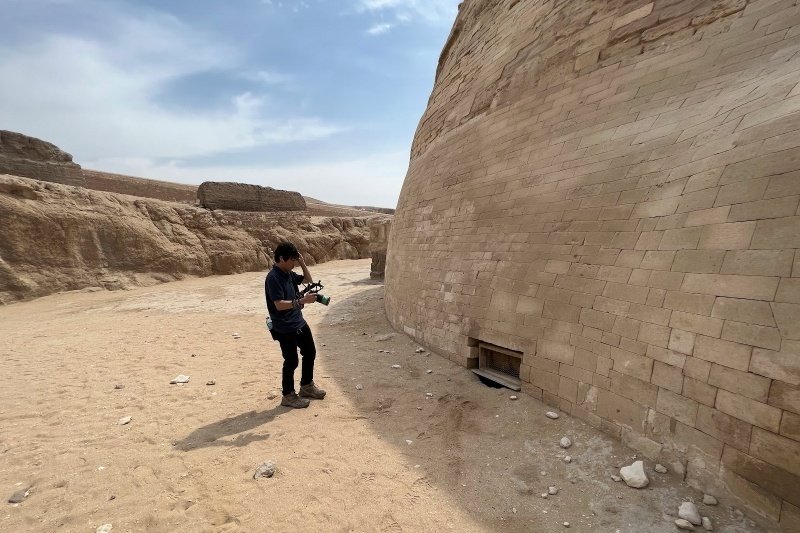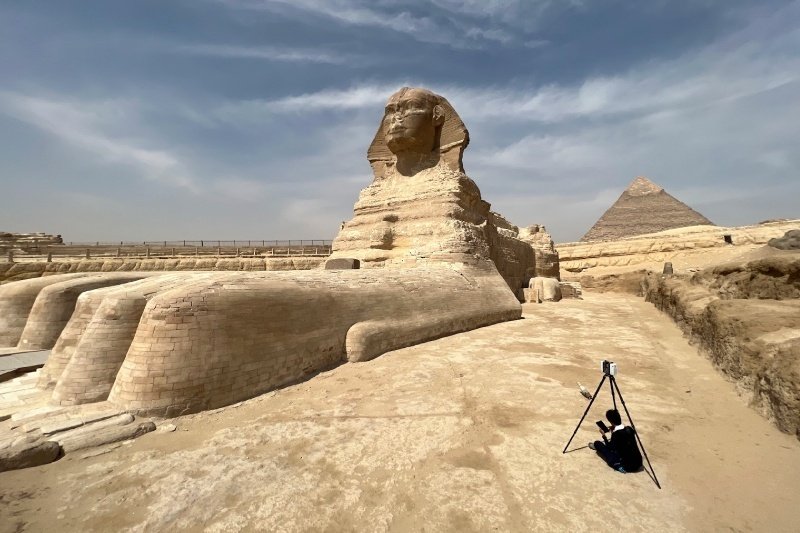
The Great Sphinx of Giza 3D Scanning Project - WORLD SCAN PROJECT’s Challenge
The Great Sphinx of Giza, which enjoys the same popularity as the pyramids as a symbol of Giza, is a world-famous ancient Egyptian structure. However, its history remains shrouded in numerous legends and mysteries that have captured the interest of many.
The World Scan Project (W.S.P) team collaborated with Dr. Yukinori Kawae, an Egyptologist at Nagoya University and an Emerging Explorer of the National Geographic Society, to conduct a joint survey of the Great Sphinx of Giza.
The Great Sphinx of Giza
The Great Sphinx of Giza was constructed near the three great pyramids of Kings Khufu, Khafre, and Menkaure, towering in the desert of Giza on the western outskirts of Cairo. It embodies the power and divinity of a king with a body that symbolizes kingship, modeled after a lion, and a head that resembles that of King Khafre.
The name "Sphinx" comes from the Greek "sphinx", which is believed to be derived from the ancient Egyptian name "shesepankh" (living image). However, it is not known what the Sphinx was called in Old Kingdom Egypt.
Furthermore, while the purpose of its construction and its original appearance remains unknown, it has been determined that the Great Sphinx was carved from the Mokattam Formation. The Mokattam Formation consists of alternating hard and soft layers of rock, resulting in varying degrees of hardness in the base, body, and head of the Great Sphinx.


During the summer solstice, you can see a majestic scene where the sun sets between the pyramids of Khufu and Khafre, aligned behind the Great Sphinx. This site has become a testament to how significantly the ancient Egyptians valued sun worship.

The Great Sphinx, now known throughout the world, was begun around 2500 B.C. by order of King Khafre, at the same time as the pyramids, but construction was interrupted and it remained buried in the sand for about a thousand years. The reason why it was left unfinished remains a mystery to this day. However, with the advent of the New Kingdom, worship of the Sphinx began, and successive pharaohs visited the Great Sphinx and also built sanctuaries and numerous commemorative monuments around it.

was also left unfinished just like the Great Sphinx
Dream Stele of Thutmose IV
Among the commemorative monuments erected around the Great Sphinx, the "Dream Stele" of Thutmose IV, located between the two paws of the Sphinx, is particularly intriguing.

located between the two paws of the Sphinx
According to Thutmose's account on the Dream Stele, before Thutmosis IV ascended to the throne, he took a nap near the Great Sphinx during a hunting trip. In his dream, the Sphinx told him that if he cleared away the sand and restored it he would become the next pharaoh.
Upon awakening, Thutmosis IV interpreted this dream as a divine oracle, dug the Sphinx out of the sand, and later, when he became pharaoh of Egypt, he erected a monument in front of the Great Sphinx and inscribed this story as the "Dream Stele."

As this legend illustrates, the Sphinx was revered as a symbol of the legitimacy of royal authority.
Sphinx and a Great Person in History
The Great Sphinx is well known not only in Egypt but also abroad, and many historical figures have visited it in the past, eager to see it.
For example, it is said that Napoleon stopped by during his Egyptian campaign in the 18th century. At that time, the Great Sphinx was still buried in sand from the neck down, and there were paintings of him on horseback confronting the Sphinx.

https://artvee.com/dl/bonaparte-before-the-sphinx/
In addition, samurai from the Japanese mission sent to Europe by the Edo Shogunate passed through Egypt on their journey and visited the Great Sphinx of Giza. Looking at the photo, you'll be struck by the curious sight of people lining up in front of the Great Sphinx, some even climbing up to about its chin.

Making the world, the future, and curiosity closer
The Great Sphinx has fascinated many people across the ages, but it has suffered considerable damage from weathering, erosion, and human destruction, continuously changing its appearance over time. Therefore, the World Scan Project (W.S.P) is undertaking 3D scanning to recreate how the Great Sphinx has changed. Furthermore, the detailed 3D scan data can be invaluable for reconstructing damaged areas and formulating restoration plans.



Our project is not merely about scanning archaeological sites. By utilizing the meticulously recorded data for research and education, we aim to widely disseminate the historical and cultural value of sites like the Sphinx and ensure their legacy is passed on to future generations. We invite you to follow the activities of the World Scan Project and join us on our journey.
ギザの大スフィンクスについてはこちらの動画もご覧ください。
この記事が気に入ったらサポートをしてみませんか?
